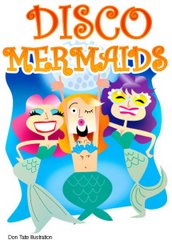This past weekend I attended a plotting workshop put on by Robin LaFevers, author of Theodosia and the Serpents of Chaos (recently nominated for an Agatha award!). Her presentation was fabulous. We learned about plot layers, inciting incidents, rising action, world building, turning points, acts, pacing, finish work and the pelvic woo! (No, we didn’t really learn about the pelvic woo. It just happens to be my favorite phrase and I like to use it whenever I get a chance. If you have a child addicted to SpongeBob, you’ll know what I’m talking about.)
I had many “uh-huh” moments at her workshop. (I’m hoping with the popularity of Oprah’s “a-ha” moment that the “uh-huh” moment will soon be sweeping the nation.) The first “uh-huh” moment came from the discussion of when to start the story. (Hint: right away...or at least, kinda soon!) My current WIP was getting pretty blah, blah, blah-ish at the beginning and I realized that I probably wrote it more for myself than the reader.
Later, I looked up more information on beginnings in a screenwriting book. Richard Walters writes that the beginning “is that part before which there is nothing.” For example, he says that the movie Kramer vs. Kramer is a film that starts at the proper beginning. Meryl Streep is standing in the doorway with her bags packed, ready to leave the family. It would have been tempting to start with the couple’s escalating fights and then get to her departure, but that’s not really what the story’s about. It’s about the father reconciling with his child. So get to the story!
The other “uh-huh” moment I had at Robin’s workshop was when she talked about writing in acts. She suggested writing just to the next act, like a mini-goal. It makes the idea of writing a whole novel seem less daunting. Surely I can write one act! Right!?
So all that plotting and structure talk caused me to do what I always do when I’m trying to plan a novel…pull out the butcher paper. For me, the scenes have to be drawn on a long paper that I can put up on the wall as a daily reminder of what the heck I’m doing. Even though “what the heck I’m doing” seems to change daily. But there’s always more butcher paper!
How do you writers out there prepare to write a novel? Outline? Note cards? Close your eyes and throw a dart?
- Robin
Oh, wait! Uh-huh Moment #3: Always find a babysitter who can stay the whole day while you attend fabulous workshops so you don’t have to speed home on the lunch break and pick up the second babysitter, then scarf down a PB&J sandwich in the car instead of eating a lovely lunch with your peers. Or maybe that’s just me…
Wednesday, March 05, 2008
Subscribe to:
Post Comments (Atom)







5 comments:
Very interesting post, Robin.
I try not to think about any of that stuff when I'm writing though. Ha! I mean I think there's a danger of the ms feeling to constructed, made-up, too worked, if you go into the writing of it with plot points and inciting incidents foremost in your mind. I think it's good to be aware of all that during revision though.
I usually take some notes before starting a novel ms. Jot down a little bit about Who and What and Where. Try to get a feel for Why this particular story? Then plunge in and start writing as soon as the first scene starts to burn in my mind, or the characters say something funny or interesting.
Oh, man, I wish I could use the butcher paper. I'm always so jealous of people who can get into the different plot lines and colored markers and who write neatly enough to figure out, later, what's up there.
I have to stick to the computer. I seem to need it all in one place (I print it all out into one, portable binder), so I can go back & check things whenever I want. Even longhand stuff, I type into a file, because what if I LOSE it! (And, yes, I back everything up.)
I did buy myself a white board, and I use it occasionally, when I need to think about the big picture. But then I have to head to the keyboard to get it into type.
I think it has to do with being very linear; I do well with tables and outlines. I'm also NOT visual, so the curves and ups and downs on paper just seem to torment me. I can completely see it in my brain, just not on those long sheets!
Hey, Dot! I love how you plunge in and start writing once you get the Who, What, Where and Why stuff. With this current WIP, I wrote the first few chapters when the idea was burning in my mind, as you say, then I had to stop myself and say, wait...what's *actually* going to happen in this story. Which is a new thing for me!!
And Becky, I think I love the butcher paper so much because I used to be a teacher so I have a tendency to write words nice and large with nice handwriting using lots of colored markers. (Smelly ones are even better!)
-Robin
Good point about beginnings and movies. That's interesting.
And about writing in acts: That's what I do. I find it so very much easier that way. And I write when ideas come (a major advantage of not being an author with agents and deadlines) and then stitch it together. I've heard some people that say that's not a good way to go, because the stitches are rough and not smooth, but it seems to work for me.
Tip: When you sit down to write, expect to be there for a long time. Go to the bathroom before. Bring snacks. Unplug the phone (or to be more moderate, just turn it off). Just sit there and don't let yourself be interrupted.
That might be just me, because my trains of thought are usually very fragile and easily scattered. =]
Generally for me, I only have to work out the characters before I start. The plot just kind of comes. The characters need to be solid before anything happens, though.
Robin LaFevers is awesome to the max. I have the galley proof of Theodosia and the Serpents of Chaos under my desk, and I plan to have it on my bookshelf before too long. I absolutely love that book. =]
Thanks for the summary of your day in SLO with Robin. I wanted to attend but dang it all, my three kids actually needed me. Don't they understand that writing comes first! Ha!
Post a Comment